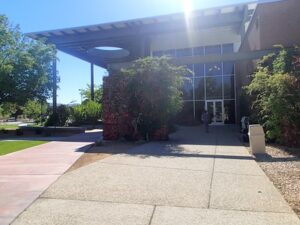In the past couple of days, I have looked at elements of higher education spending that raise the cost of tuition. In the past three decades the cost of a college education at a public institution has an average of 237%. Since 1992, the cost of a WCC education has risen by 262%, when taking the school’s per credit hour fees into account. One of the drivers of unrelenting and unsustainable tuition increases is administrative growth.
The first two expenses I have looked at are marketing and construction. Today I will focus on the damage caused by unchecked administrative growth. I have written about the administrative growth at Washtenaw Community College dozens of times. Hiring is not just a one-time cost. It permanently adds costs that grow every year to the school’s bottom line.
Prior to 2011, the WCC executive had well-known agreement with the faculty that the size of the administration could not exceed the size of the full-time faculty. It was a way to keep the growth of the administration in check. For reasons that are not entirely clear to me, restricting the growth of the full-time faculty is – and has been – a high priority for the administration and the Board of Trustees.
What they overlook is that the more full-time faculty a school has, the more courses and degree programs the faculty develop. The diversity and depth of the school’s programs attract more students, and the enrollment grows.
Why faculty growth is better than administrative growth
If adding full-time faculty to an institution is anathema due to cost, then adding administrative personnel should be even less palatable. Adding full-time faculty increases the range and depth of academic coursework available as well as the number of teachers who can deliver it. Full-time faculty generate new, mission-relevant cash streams for the College. Limiting their number effectively caps the enrollment.
Part-time faculty members do not develop new courses. They can deliver existing coursework, so being available to teach means that they can prevent the College from losing cash. Their work is still mission centric.
Non-executive administrators can neither develop new courses nor teach existing ones. Their work can still be mission centric because they can support students by providing necessary services. But there is a strict limit to the administrators the institution can support and continue to expand. Add a thick layer of executives to the administration while limiting the number of full-time faculty, and the institution extinguishes any possibility that it can avoid tuition increases. The more it raises tuition, the fewer student enroll.
If property tax collections or state appropriations happen to be rising, the school can disguise the effect of student disenrollment, but not for long. The cost of all those administrators increases annually and will quickly consume any increases in public funding. Eventually, the school needs to increase tuition or add inventive (or maybe invented) fees to cover the additional cost of administrative bloat.
(Does any of this sound familiar?)
The hidden effects of administrative bloat
When a community college raises tuition and fees yet offers only a limited number of courses and programs, prospective students quickly conclude that the institution has little to offer. That perception is ridiculously hard – as in next-to-impossible – to change. The institution can increase the marketing budget all it wants; prospective students will not return. Why should they? The college offers nothing of value for the money.
That is what happens when a higher education institution fails to acknowledge that the size of the full-time faculty drives the student enrollment, and the size of the administration drives the cost of attendance.
Photo Credit: Francisco Anzola , via Flickr



































